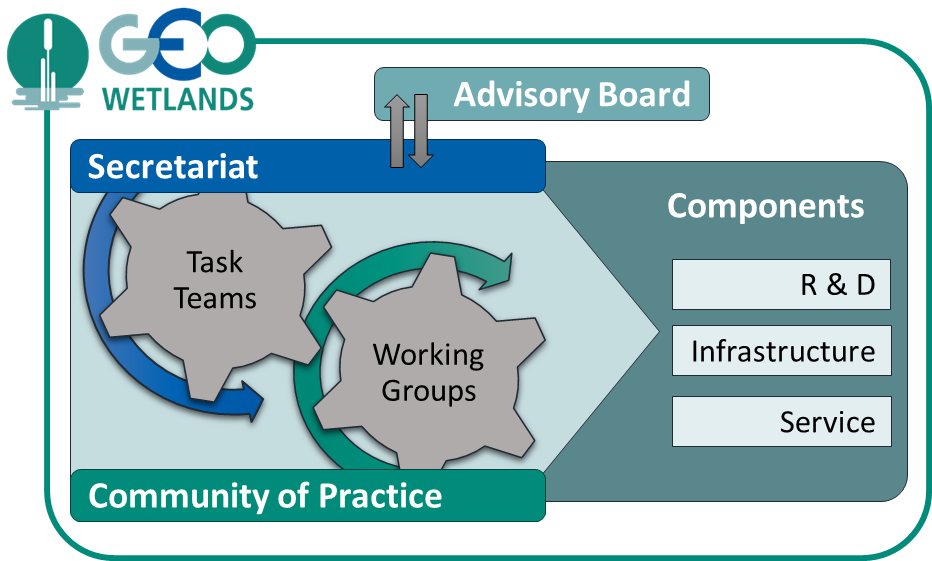GEO-Wetlands was founded by a diverse partnership coordinated by the University of Bonn, Wetlands International and the European Space Agency (ESA). It can be seen as outcome of the EU Horizon 2020 project SWOS based on previous activities around the development of a Global Wetland Observation System initiated by the Ramsar Convention on Wetlands and supported by GEO BON. Many other partners are involved an fulfill different roles within the initiative. More information about the partners can be found on the community page.
The main goal of GEO-Wetlands is to support stakeholders and users with Earth Observation (EO) based mapping, monitoring, inventory and assessment of wetlands. Therefore, on the global level two major stakeholders and target user networks of GEO-Wetlands are the Ramsar Convention on Wetlands, as well as UN Environment with their joint responsibility of the Sustainable Development Goal 6.6 (Water related ecosystems) and especially indicator 6.6.1 which is about measuring changes of these ecosystems.
The GEO-Wetlands partnership is continually growing with new organizations and projects from all over the globe. The open and collaborative framework of GEO-Wetlands allows organizations, projects and even individuals to get actively involved, bring new ideas, perspectives and resources to work under a common set of goals and contribute to specific tasks by joining (or even establishing new) GEO-Wetlands working groups and task teams. These groups and teams are the motor of GEO-Wetlands where the work and activities are conducted and where the strategic goals and plans are implemented. The bottom-up approach of these groups is supplemented by a top down guidance through interaction with the major stakeholders and user networks. The overall coordination of the initiative is managed by the GEO-Wetlands secretariat which currently exists as virtual secretariat lead by University of Bonn, Wetlands International and ESA. The figure below visualizes the current structure of GEO-Wetlands, as described above. One goal for the next years is to strengthen these structures e.g. by establishing a formalized advisory committee and by acquiring resources for setting up a more permanent secretariat.


